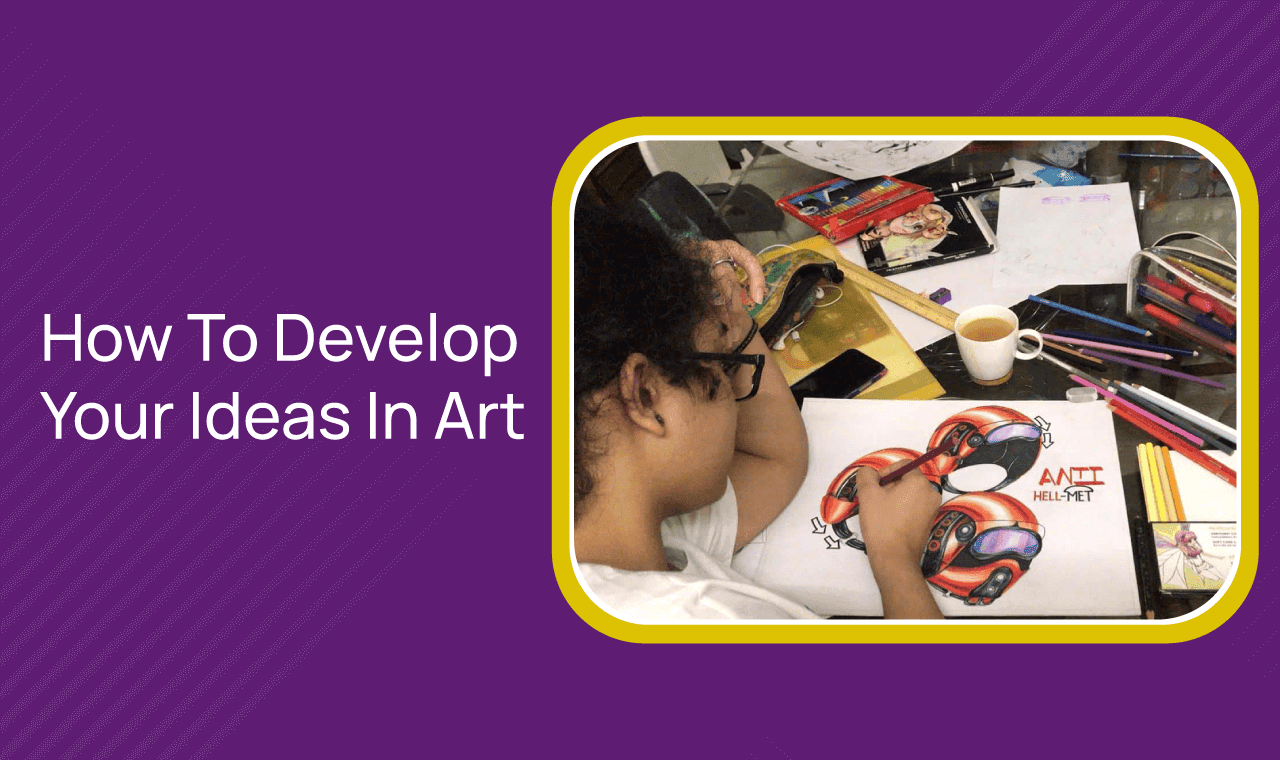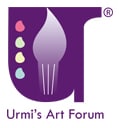
To grow your art career, your creativity should be at its peak. You must develop your ideas in art to level up your skills. Once you start creating new ideas, you can showcase your creativity and a deep understanding of artistic concepts.
As you open the horizons of your mind in art, you can easily aim for top grades and even your personal growth. However, initially, becoming creative can seem overwhelming. But don’t worry! This guide will walk you through transforming your initial inspiration into a complete artwork. So, let us look at how to make idea development in visual art possible.
Boost your creativity today with Urmi’s Art Forum!
A] Idea Development In Visual Art
Idea development for artists demands a lot of effort. However, once students understand what they wish to achieve in the long term, they can simplify the process. To begin with, it becomes important to understand the assessment criteria for your A-level coursework.
Before starting brainstorming, you should know what the examiners are looking for in your coursework. Knowing this can help you tailor your work and meet those standards. This way, you will be able to understand the technical skills or the level of creativity that your examiners expect from you. Also, you will be able to assess the thematic elements that should be present in your art.
Apart from this, you should also set clear objectives for working on your art. Once you have a goal, idea development in visual art becomes simpler. It provides you with a roadmap for your artistic journey. You will be able to understand what you wish to achieve with your coursework.
Setting clear objectives will help in your artistic journey. You can follow and explore a particular theme or develop a specific technique to convey a message. If you are confused about how to explore the purpose of your work, you can join art classes at Vile Parle. Attending art classes can prove beneficial in kick-starting your journey to figuring out the best art design ideas.
B] Step-by-Step Guide For Personal Development Drawing Ideas
The below-mentioned are a few steps that focus on art development for beginners.
1. Research And Explore Your Interests
Research is the pillar of idea development in art. Once you gather information, you can draw inspiration and understand different perspectives. To develop new ideas, you can dive into art history and contemporary works. Make sure that you go through the history of the famous artistic movements. The more you explore, the richer your ideas will become. Eventually, it will become easier to bring life to your artwork.
Also, you must remember that inspiration can come from anywhere. You can find it in nature literature, music, or personal experiences. Ensure you always keep an open mind and look for connections between elements to develop unique and compelling ideas.
2. Brainstorm The Ideas
Brainstorming is one of the most creative processes that can enhance the quality of your artwork. Specific techniques can prove beneficial in brainstorming. For instance, mind mapping, free writing, or drawing sketches to capture your thoughts are some examples of brainstorming. These methods prove fruitful in helping you visualise your ideas and see how they interconnect.
Brainstorming with your classmates, teachers, and mentors is also a great way to develop your ideas in an art. Discussions with your peers can help you gain different perspectives. With their feedback, you can refine your ideas and consider aspects you might have missed.
3. Develop A Concept And Refine The Ideas
After the brainstorming session, you will have a good pool of ideas. Now, you can develop these ideas into concepts. Choose the most promising ideas and contemplate turning them into a complete artwork. You can consider the themes, concepts, and materials you will use.
While refining the ideas, you must understand that it is an ongoing process. You must continuously evaluate and improve your ideas. You will also need to adjust the composition and experiment with different techniques throughout the process.
4. Experiment
Once you start experimenting, you will succeed in truly bringing your ideas to life. Experimentation is the phase where you execute trial and error. Here, you can explore various approaches carefree. This process is crucial for discovering new techniques and pushing the boundaries of your creativity.
You can use different methods of experimentation when it comes to refining your art development ideas. You can use mixed media, digital art, or unconventional materials to step out of your comfort zone. Using these methods will only help improve your artistic knowledge and final piece.
If you wish to explore new methods of experimentation, feel free to join UCEED coaching in Mumbai.
5. Create The Final Piece
After refining your concept and getting some insights on experimentation, you can finally go ahead and create your final piece. While you do so, you must plan the execution carefully. Pay attention to your art from the start of sketching to giving it final touches.
6. Focus On Presentation
Finally, it is important to remember that presentation is the key to helping you make a lasting impression. So, your artwork should be meticulous, well-framed, and appropriately lit. After all, how you present your art can impact how other people and examiners see it.
Also, the presentation can influence your grades. Presenting your art perfectly can highlight your attention to detail and professionalism. It shows that you respect and put much effort into creating your work.
Boost your creativity today with Urmi’s Art Forum!
Conclusion
Developing your ideas in art is an ongoing process. It involves a lot of research, brainstorming, and much more!
The steps mentioned above will help you create a compelling and unique artwork. These tips will help you brush up on your creativity and skills. If you work on developing your ideas, you can enhance your artistic potential. For more help bringing out the best in your artwork, please contact us.

Komal Ullal
Ms. Komal Ullal, a recipient of the prestigious President’s Award and Co-founder of UAF, is an expert in student profiling, enhancing artistic skills, mentoring in design thinking and an inspiring women entrepreneur. With an impressive collection of 577 awards—including 196 trophies and 109 medals—earned in drawing and painting at both national and international levels, she was featured in the Limca Book of Records in 2007 as the youngest achiever of such accolades. Her passion and dedication continue to inspire budding artists and designers worldwide.

